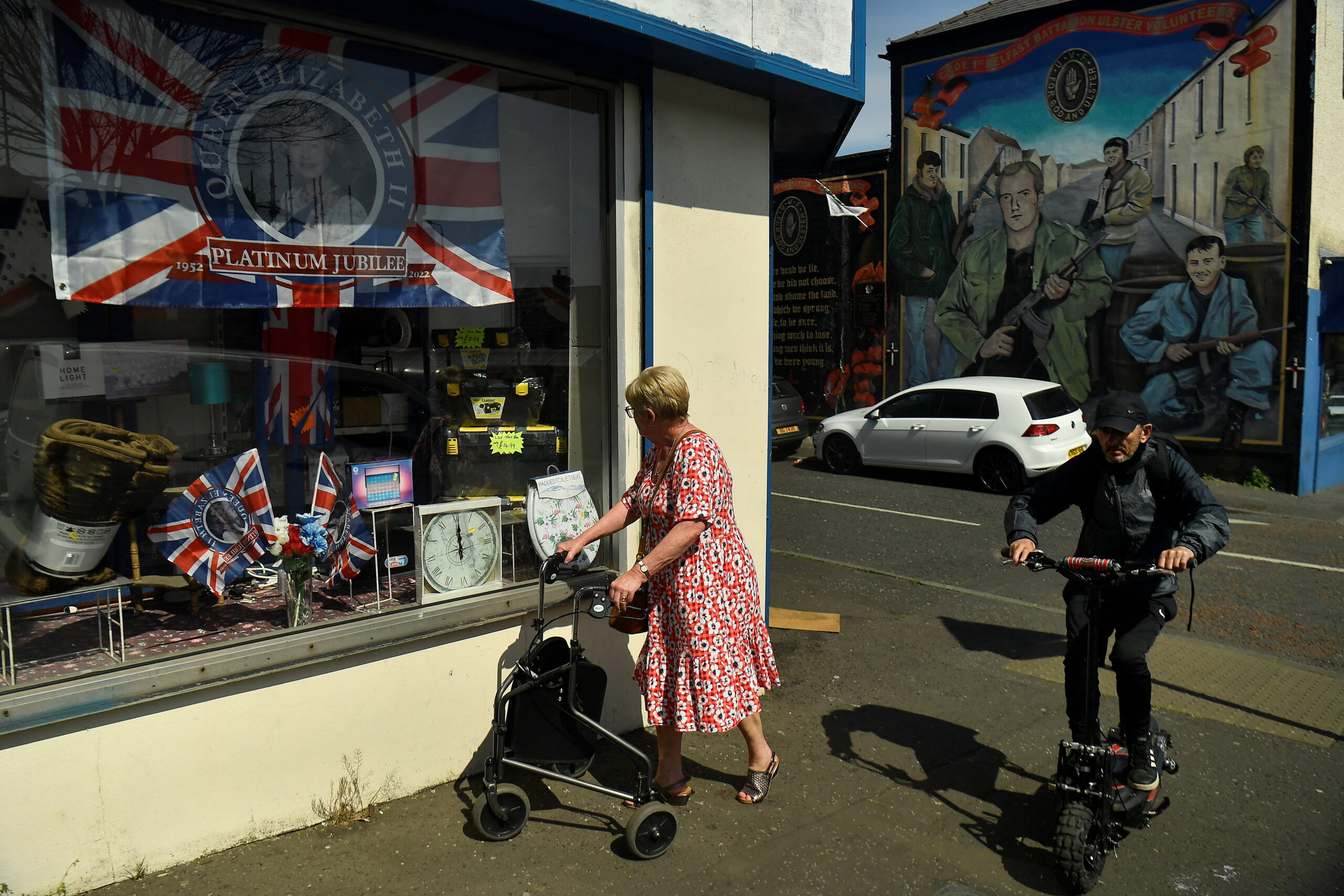The Queen’s Death Looks Different From Belfast

There was a boy at my school in Belfast who used to sing a Protestant song on St Patrick’s Day every year. I don’t remember all the lines, but the chorus went something like: “You can celebrate St Patrick’s Day, you can dye the river green, but when the day is over you’re still governed by the Queen.”
I don’t remember this song because it was unusual or transgressive – it was just catchy. This boy certainly wasn’t an outlier, a lot of us did things like this; both those from the Catholic community, like me, and those from the Protestant one, like this boy. Northern Ireland was, and is, a deeply sectarian, post-conflict society. I don’t think you can blame teenagers in that context for doing things that are stupid or a bit offensive – for not knowing any better, essentially.
The song is a fairly innocuous (and dare I say camp) example of the kind of cultural signifier I associated with the royal family when I was growing up. To me, it was inextricably linked with Northern Irish Protestantism and unionism, in both its moderate and extreme forms. This was a world of curbstones painted red, white and blue; 12 July bonfires; golf (yes, the sport); Orange Order marches; Ulster rugby; graffiti that says things like ‘Kill All Taigs’; the Christmas figurines a good friend of mine had on her family tree that said ‘Ulster Says Snow’ and ‘Snow Surrender’; my own school, which was a Protestant grammar school; stories from family members about terrible things the British army did to poor Catholic communities during the Troubles; slogans like ‘Stand Up For The Ulsterman’ and ‘For God And Ulster’; some of my closest friends; colonialism; Disneyland Florida (which my mum insists is Protestant); and the Democratic Unionist party – in particular, Ian Paisley with his famous refrain: “Never, ever, ever surrender!”
This list could be a lot longer. But you know what I mean. Or you don’t, because you didn’t grow up with it, and however well I try to explain it these symbols will be meaningful for me in a way they never will be to you. It’s like trying to represent a four-dimensional shape: no construction of lines and intersecting planes can truly account for the difference in conceptual environments. This list could be ten thousand words, a documentary, or a novel. It still wouldn’t reflect a culture, with all its nuances, sentimentality and weirdness.
The royal family means what it means to me. In England, however, it seems to be associated with the English class system (I mean this to be value-neutral; some people view this as a positive, some as a negative); Britain’s imperial past (as before); tea towels bearing the union jack and ‘Keep Calm And Carry On’; the crockery collections of older relatives; Buckingham Palace; poppies; shiny black horses and soldiers in postbox red uniforms. Lots of other things, probably. I will never understand this conception of the royal family. I was surprised, for example, when I moved to Manchester at 18 to discover it is largely viewed as apolitical in England. To me, it had always been fairly taboo.
Now, I’m the one squinting at an incomplete rendering of a four-dimensional shape. But the thing is I’m not wrong. The royal family does mean what it means to me. It also means what it means in the mainstream English consciousness, or to an English republican (which isn’t the same thing as a republican from Belfast, of course). To an American, it might mean tea and scones and words like “guvnor” – or maybe that’s just what an American thinking about England means to me. All these impressions are true, in their way. Or to put it differently: none of these is the correct view of the royals.
This is how mythology works as part of nation-building; an entity comes to hold a certain meaning for a certain group of people, but for that group only. The sentimentality that surrounds certain symbols, like the royals, is divorced from reality. That’s what propaganda is. We tend to use this word for countries with cultures very separate from our own, since we see our own culture as the benchmark against which others are judged. But people everywhere in the world, from every country, culture and political system, are all the same; we’re all very susceptible to the power of stories.
It’s easy to see mythology as mythology when you’re coming from an outside perspective, but much harder to see from where you are. This is why, I always think, it is genuinely useful to have come from a place like Belfast, which is sort of officially designated by the wider world as dysfunctional and bizarre. You have to accept your biases as biases. This isn’t the same as letting go of them entirely. But it’s something. Elizabeth Alexandra Mary Windsor was a person. The Queen was a symbol.
Rachel Connolly writes about politics, culture and technology.


